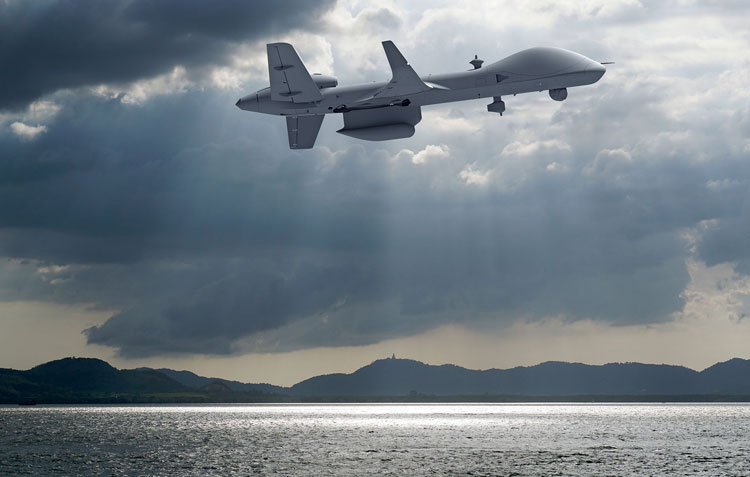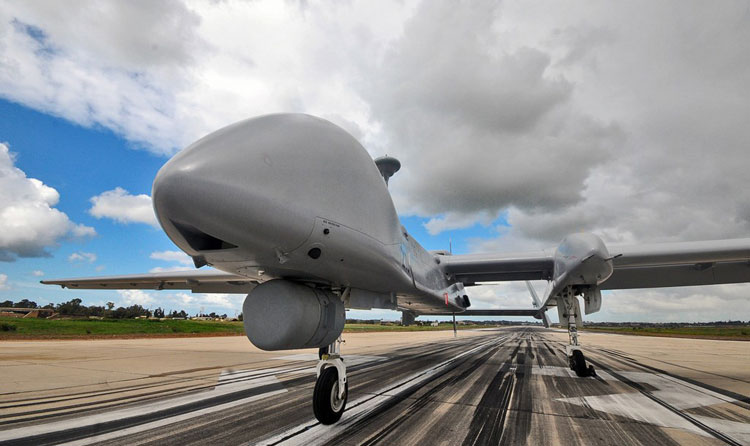INDIAN ARMED FORCES CHIEFS ON OUR RELENTLESS AND FOCUSED PUBLISHING EFFORTS

The insightful articles, inspiring narrations and analytical perspectives presented by the Editorial Team, establish an alluring connect with the reader. My compliments and best wishes to SP Guide Publications.

"Over the past 60 years, the growth of SP Guide Publications has mirrored the rising stature of Indian Navy. Its well-researched and informative magazines on Defence and Aerospace sector have served to shape an educated opinion of our military personnel, policy makers and the public alike. I wish SP's Publication team continued success, fair winds and following seas in all future endeavour!"

Since, its inception in 1964, SP Guide Publications has consistently demonstrated commitment to high-quality journalism in the aerospace and defence sectors, earning a well-deserved reputation as Asia's largest media house in this domain. I wish SP Guide Publications continued success in its pursuit of excellence.
AI Drone and Strategic Bomber
Hindustan Aeronautics Limited (HAL) is working on an AI-driven multi-role, advanced and long-endurance drone for strategic missions in high-altitude areas
 |
The Author is Former Director General of Information Systems and A Special Forces Veteran, Indian Army |

In November 2020, the Indian Navy had procured two MQ-9B SeaGuardian drones from the US on lease, which were not armed. Now there is news that India is also planning to procure around 30 multi-mission armed Predator drones from the US for the Armed Forces at an estimated cost of over $3 billion. According to another report, Hindustan Aeronautics Limited (HAL) is exploring the possibility of producing the Israeli Heron TP drones in collaboration with its manufacturer - Israel Aerospace Industries (IAI). The report has quoted a source in the HAL to say, "This project is aimed at addressing the requirement of our Armed Forces as well as global supplies."
The operating system of the long-endurance drone will feature applications of Artificial Intelligence (AI) and the Indian Armed Forces will be able to use it for multiple purposes
The Heron TP drones are equipped with automatic taxi-take-off and landing (ATOL) and satellite communication (SATCOM) systems for an extended range. The medium-altitude Heron drones are capable of operating for nearly 45 hours at an altitude of up to 35,000 feet. HAL is also working on two separate drone projects with the Defence Research and Development Organisation (DRDO).

An important development is that HAL is working on an AI-driven multi-role, advanced and long-endurance drone for strategic missions in high-altitude areas with an eye on Chinese activities along the Line of Actual Control (LAC). The HAL has set a target of conducting the maiden test-flying of the unmanned aerial vehicle (UAV) by the middle of 2023 with plans to produce 60 such platforms in the first phase of the project.
The above UAV will be a rotary-wing drone with the capability to carry a load of 40 kgs, including “missiles” and sensors. It is being developed in backdrop of the requirements of the Armed Forces to keep a strong and continuous vigil over the mountainous areas along the LAC. The operating system of the long-endurance drone will feature applications of Artificial Intelligence (AI) and the Armed Forces will be able to use it for multiple purposes. Another source said, "The drone is being developed in such a way that it can carry a wide range of vital military systems including sensors, missiles and various other weapons."
The Armed Forces are planning to acquire a sizeable number of unmanned aerial platforms in the next few years to significantly ramp up their surveillance capability, particularly to monitor Chinese activities along the LAC and in the Indian Ocean Region (IOR). Each service has accordingly drawn up plans for procuring unmanned platforms including armed drones in backdrop of the continuing standoff with China in Eastern Ladakh and activities of Pakistani drones.
Indian Armed Forces are planning to acquire a sizeable number of unmanned aerial platforms in the next few years to significantly ramp up their surveillance capability, particularly along the LAC and in the Indian Ocean Region (IOR)
Amid the ongoing research on AI in China, one area is Brain-Computer Interface (BCI), which uses AI to improve their operation, while opening a path to cognitive enhancement. Neuromorphic chips, which imitate brain structure promise faster processing speeds for algorithms that support general intelligence, are being adapted in China for use in BCIs. The Centre for Brain-Inspired Computing Research was established by Tsinghua University in 2014 to study neural functional/computational theory, machine learning, and chip architecture. There are other similar research facilities in China. With multiple focused initiatives, China plans to lead the world in AI by 2030. India has started late on AI but we have the brains and the requirement is a focused ‘holistic’ approach.
Now there is news that the Indian Air Force (IAF) may acquire the advanced and upgraded version of the Russian Tu-160 Blackjack bomber. This along with BrahMos Aerospace developing the BrahMos hypersonic cruise missile together with the S-400 air defence missile systems would raise eyebrows in Washington. But the US is making enough money from India’s defence sector and should hardly expect India to rely totally on the US for imports or collaboration under ‘Make in India’. Besides, the US is hardly in a position to dictate what weaponry India should procure to meet its security requirements.

The indication of India procuring the advanced and upgraded version of the Russian Tu-160 Blackjack bomber was given by former Chief of Air Staff, Air Chief Marshal Anup Raha while delivering the keynote address recently at the first edition of the ‘Chanakya Dialogue’ hosted by the Chanakya Foundation at New Delhi. He also indicated that this bomber will also be equipped with the BrahMos hypersonic cruise missile under development.
The Indian Air Force (IAF) may acquire the advanced and upgraded version of the Russian Tu-160 Blackjack bomber
The present Tu-160 Blackjack bomber is equivalent to the US B-1 strategic bomber. It has a climb rate of 70 metres per second, maximum speed of 2,200 kmph, cruising speed of 960 kmph, 12,300 km range without refueling and combat radius of 7,300 km. The advanced and upgraded version would probably have enhanced characteristics. The government needs to take an early decision on a strategic bomber for the IAF.





